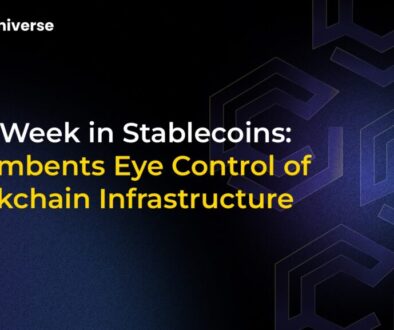What is a Ghost Chain? How to Spot Dead or Dormant Crypto Projects

The Digital Ghost Town: Unmasking the Crypto Graveyard
Imagine a once-bustling city, now eerily silent. The streets are empty, shops are shuttered, and the only sound is the wind whistling through abandoned buildings. This is a ghost town. In the fast-paced world of cryptocurrency, a similar phenomenon exists: the ghost chain. These are blockchains that are technically still running but are devoid of life, abandoned by developers, users, and investors.
The crypto landscape is littered with thousands of projects, each promising to be the next big thing. But for every success story, there are dozens that fade into obscurity. Learning to differentiate a thriving digital metropolis from a deserted one is a crucial skill. This guide will teach you exactly
Ghost Chain vs. GHOST Protocol: A Critical Distinction
Before we dive deeper, it’s essential to clear up a common point of confusion. The term “ghost chain” is a colloquial descriptor for an abandoned blockchain project. It has nothing to do with the GHOST (Greedy Heaviest Observed Sub-Tree) protocol or its derivatives like GHOSTDAG.
GHOST is a consensus mechanism designed to improve the security and efficiency of blockchains. A project using this technology, like Kaspa (KAS), is leveraging a specific technical protocol. A ghost chain, on the other hand, is a failed project, regardless of the technology it was built on. Don’t let the similar names fool you!
The Telltale Signs: 5 Red Flags of a Dying Blockchain
A project doesn’t become a ghost chain overnight. It’s a gradual decay, marked by several warning signs. Here are the key indicators that a blockchain is on the path to irrelevance.
1. The Sound of Silence: Stagnant Developer Activity
A healthy blockchain is a constantly evolving organism. Developers should be actively fixing bugs, rolling out updates, and improving the code. The project’s GitHub repository is the best place to check this. If the last significant code commit was months or even years ago, the project’s heart has likely stopped beating.
2. The Empty Town Square: A Lifeless Community
Community is the lifeblood of any crypto project. Check the project’s official channels like Discord, Telegram, and X (formerly Twitter). Are there genuine conversations, developer AMAs, and active moderators? Or is it a wasteland of unanswered questions, bot spam, and announcements from six months ago? An abandoned community is a clear sign of an abandoned project.
3. Tumbleweeds on the Ledger: Low On-Chain Volume
A blockchain’s primary purpose is to process transactions. Using a public block explorer, you can see this activity in real-time. If a chain is processing only a handful of transactions per day, or if the blocks are consistently near-empty, it means no one is actually using it. This is one of the most definitive signs of a ghost chain.
4. The Barren Ecosystem: No dApps, No Users
Vibrant blockchains attract builders who create decentralized applications (dApps), DeFi protocols, and NFT marketplaces. If a platform that promised a rich ecosystem has no functioning dApps or its existing ones have negligible Total Value Locked (TVL) and user activity, it has failed to attract the network effects needed for survival.
5. The Flight to Safety: Dwindling Liquidity and Delistings
When a project is dying, its native token often reflects this. Look for extremely low trading volume, thin liquidity on decentralized exchanges, and delistings from major centralized exchanges. While price alone isn’t the only metric, a token that is illiquid and being removed from exchanges is a massive red flag.
Your Due Diligence Checklist:
To protect yourself, you need a systematic approach to research. Here is a step-by-step checklist to investigate a project’s health:
- Check the Pulse on a Block Explorer: Look up the blockchain’s native explorer. Are new blocks being produced regularly? How many transactions are in each block? How many active wallets are there? Minimal activity is a bad sign.
- Scour the Code on GitHub: Go to the project’s GitHub page. Look at the “Commits” history. Is development consistent or sporadic? Check the “Issues” tab to see if developers are responding to bug reports.
- Gauge the Community Vibe: Join the Discord and Telegram. Read through recent conversations. Is the team communicating updates? Are community members engaged and helpful, or is it a ghost town?
- Analyze Market Activity: Use a site like CoinGecko or CoinMarketCap. Check the token’s trading volume, the exchanges it’s listed on, and its liquidity pools. If it’s only traded on one obscure exchange with $1,000 in daily volume, proceed with extreme caution.
- Vet the Roadmap and Promises: Review the project’s original whitepaper and roadmap. Has the team delivered on its promises? Grandiose claims of being the “fastest chain” or an “Ethereum killer” with little to show for it are common in failed projects.
A Walk Through the Crypto Graveyard: Cautionary Tales
Even well-funded projects can become ghost chains if they fail to achieve adoption and utility.
- Diem (formerly Libra): Backed by Facebook (Meta) and a consortium of major companies, Diem was poised to be a global force. However, it crumbled under intense regulatory pressure before it ever truly launched, becoming one of history’s most high-profile dead projects.
- Terra (LUNA): While its collapse was sudden and catastrophic rather than a slow fade, the Terra Classic chain is now a textbook example of a dead ecosystem. The collapse wiped out billions and served as a stark lesson on the risks of flawed algorithmic stablecoins.
- KodakCoin: In a classic case of a legacy brand trying to cash in on crypto hype, Kodak’s blockchain venture failed to deliver a compelling product or find a real-world use case, quickly fading into obscurity after its initial announcement.
The Lingering Risks of Ghost Chains
Ghost chains aren’t just failed investments; they pose ongoing risks. The most significant consequences include:
- Financial Loss: Investors can see the value of their holdings plummet to zero.
- Security Vulnerabilities: Abandoned websites, wallets, and social media accounts can become traps for phishing attacks, tricking unsuspecting users.
- Opportunity Cost: Time and capital spent on a dead project could have been allocated to a legitimate, growing ecosystem.
Conclusion: Navigate with Skepticism and Skill
In the exhilarating and often chaotic world of crypto, new projects will always emerge, especially during bull markets. However, history shows that most will not survive. The ability to look past the hype and analyze the fundamental health of a blockchain is not just a useful skill—it’s essential for survival.
By using the checklist and understanding the warning signs, you can better navigate the digital frontier, sidestepping the ghost towns and focusing your energy on projects with genuine substance, active development, and vibrant communities. Always be skeptical, and always do your own research.


